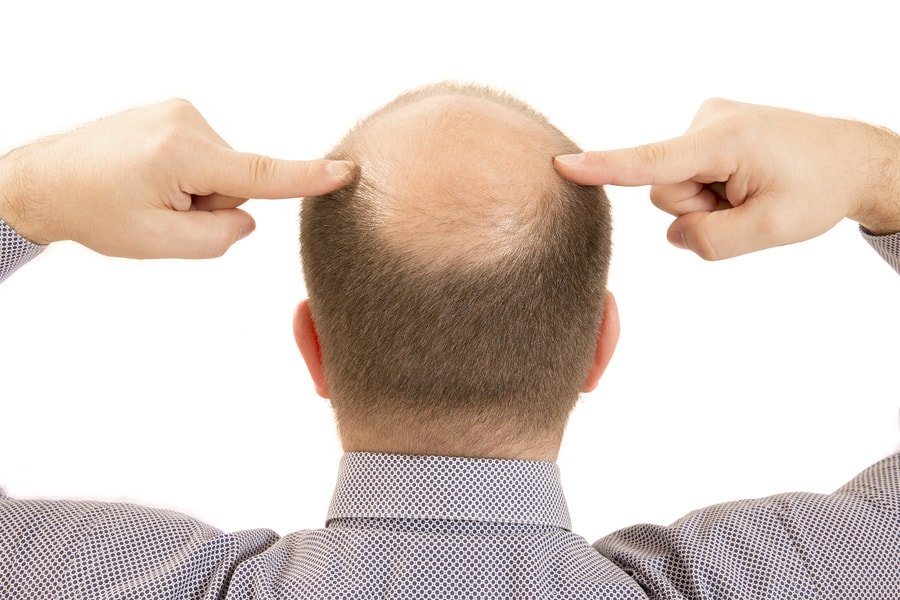
Have you heard of topical minoxidil for hair loss? The vast majority of men and half of all women will suffer from pattern baldness in their lifetime. Read on to learn more about the benefits, mechanisms, and drawbacks of topical minoxidil.
What is Minoxidil?
Minoxidil was originally developed as a blood pressure medication that works by widening the blood vessels [1].
Soon after, researchers found that a major side effect of oral minoxidil was unexpected hair growth [1].
Due to the discovery of this side effect, topical minoxidil was developed and approved by the FDA and Health Canada as a treatment for hair loss in both men and women [2, 3, 4].
Minoxidil is the active component of Rogaine, a hair-loss product which is sold over the counter. Topical minoxidil products are available as liquids or foams [1, 5].
Mechanisms of Action
The exact mechanism of how minoxidil stimulates hair growth is not fully understood. According to research, some of the biological effects of minoxidil may include [2]:
- Minoxidil widens blood vessels (vasodilator) in the area where it’s applied. However, topical minoxidil doesn’t affect blood vessels throughout the body, which may reduce potential side effects [2, 6].
- Minoxidil relaxes the muscle of the blood vessels through the action of its sulfated metabolite (minoxidil sulfate) by opening potassium channels [2].
- By opening potassium channels and dilating blood vessels, minoxidil allows more blood, nutrients, and oxygen to reach the follicle, which may promote hair growth [6].
- Minoxidil increases keratin-associated proteins, which is associated with a positive response to the treatment [7, 8].
- Minoxidil also increases the vascular endothelial growth factor (VEGF), which is involved in hair growth [9].
A sulfotransferase enzyme test can help determine patient response to topical minoxidil treatment [10].
Uses Of Topical Minoxidil
FDA-Approved Uses
Male or Female Pattern Baldness
Minoxidil is FDA-approved to treat male or female pattern baldness. In men, this condition typically affects the top and front of the scalp, resulting in a receding hairline. In women, the hair becomes thinner throughout the head [11].
Research shows that topical minoxidil can promote hair regrowth after 3 to 6 months of treatment [12].
However, there are a few important things to note.
Minoxidil is much less effective when there are large areas of hair loss. The growth also only lasts as long as treatment continues. Hair loss may begin again within months after stopping the use of minoxidil [1].
In addition, only about 40% of patients see any benefit from treatment [12].
Off-Label Uses
Alopecia Areata
Alopecia areata is an autoimmune disorder that can cause hair loss in children and adults. Minoxidil is sometimes used to treat this condition [13].
A systematic review of 29 clinical trials looking at different treatments for alopecia areata found no strong evidence to support the use of minoxidil for this condition [14].
Chemotherapy-Induced Baldness
Chemotherapy treatment can damage the hair follicle cells, leading to hair loss. There is some limited evidence that minoxidil can help promote hair regrowth in this condition [15].
Side Effects
Minoxidil can cause several side effects. If any side effects persist or worsen, let your doctor know. This is also not a complete list of possible side effects. Tell your doctor if you experience any serious side effects or notice any effects not listed here.
Minoxidil may cause an allergic reaction that can lead to itching, hives, swelling, and/or difficulty breathing [1].
Other possible side effects include chest pain, dizziness or fainting, irregular heartbeat, severe itching, burning, or redness of scalp, sudden and unexpected weight gain, and swelling of the face, hands, or feet [1].
Less serious side effects may include a change in hair color or texture, dry, flaking, or red skin, and increased hair loss [1].
If you are pregnant or breastfeeding, have a history of heart disease, high blood pressure, or fluid retention, or have open wounds or irritation on your scalp, talk to your doctor before using minoxidil [1].
Dosage
Topical minoxidil is available in two strengths, 2% and 5%.
Research suggests that 5% topical minoxidil is more effective than the 2% strength. Studies have shown that 5% topical minoxidil may result in more hair regrowth and an earlier response to treatment [12, 1].


